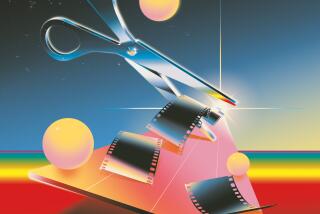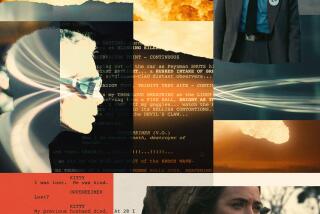How the cinematographers got those shots in ‘The Martian,’ ‘Fury Road,’ ‘Carol’ and ‘Sicario’
Movies are stories told in the language of images and cinematographers are its fluent interpreters, translating the chaos of a set into the seductive flow of a well-crafted film. Here, the directors of photography who shot four of the year’s best movies explain how they turned an initial idea into cinematic reality.
Roger Deakins, “Sicario”
The scene: FBI agent Kate Macer (Emily Blunt) takes her first trip across the border into Mexican drug cartel territory, then gets into a gun battle on the way back to the U.S.
Birth of the shot: “The main character, Kate, had to experience this environment that she’d never seen, that was actually relating to her job. It’s not strictly her point of view, but it’s about how much information we’re showing the audience, which reflects her position.”
Making it work: Unable to shoot in Ciudad Juárez for reasons of safety, the production mixed footage shot in El Paso, Mexico City and on a replica of the border-spanning Bridge of the Americas built in an Albuquerque parking lot. “It was quite a struggle to get all those elements to fit, but that ended up being the most economical way to get the effect of entering this alien environment.”
Shot significance: “For me, Kate is the audience’s view into this world that we as a country don’t know much about, or what the authorities are doing in our name. We’re taken on that journey through Kate’s eyes.”
John Seale, “Mad Max: Fury Road”
The scene: Inside the War Rig, the armored tractor-trailer Charlize Theron’s Furiosa drives through the film’s post-apocalyptic desert.
Birth of the shot: Replacing the departing Dean Semler, Seale came on board after director George Miller had spent years storyboarding the entire film, albeit without a conventional script. “When I was told that 40% of the movie would be shot in the truck, I got a bit worried. I thought, will this be boring?”
Making it work: Shooting digital for the first time, Seale was able to squeeze digital Arri Alexa M cameras, “about the size of two egg crates,” inside the truck to get a variety of angles, often using three or four cameras at once. “We could hide it anywhere. It was such an asset to have that instead of a film camera. I’m a film man, but I do feel we should move along a bit.”
Shot significance: In a movie that amounts to one long chase scene, the truck scenes serve as an oasis, an opportunity to orient ourselves amid the chaos. “When you cut back to the cab of the truck, to a familiar angle, the audience knew exactly where they were.”
Ed Lachman, “Carol”
The scene: Brought together by love and pushed apart by society, Therese (Rooney Mara) and Carol (Cate Blanchett) lock eyes across a crowded room.
Birth of the shot: Lachman and director Todd Haynes chose a look inspired by contemporary street photography rather than stylized period films. That realist restraint lays the groundwork for the swooning subjectivity of the final scene, which detonates like a time-release bomb.
Making it work: “The flow of the film is that we’re never quite sure where we’re going in this relationship. There’s this constant flux. The scene is where the subjectivity is shifting back and forth. Todd wanted a certain emotionality of the camera, so we used a dolly, but we had the operator hand-holding, and it’s slowly moving. It’s the only place where we’re using a mechanical zoom.”
Shot significance: “The effect is a constant shifting of point of view, encapsulating the emotion between them and the fluctuation of their feelings. There’s an equality between both of them. We’re rooted between the two.”
Dariusz Wolski, “The Martian”
The scene: Marooned on Mars, perhaps for good, astronaut Mark Watney (Matt Damon) tracks his state of mind in video logs no one but him may ever see.
Birth of the shot: “In the script, a lot of it’s monologue. It’s his testimony. So we photographed the whole thing objectively, and then we had to create this thing objectively.”
Making it work: Wolski set up cameras around the Hab, Watney’s Martian home away from home, to give Damon and director Ridley Scott as much freedom as possible on the confined set. Although “The Martian” is shot in true 3-D, the logs were shot with tiny GoPros, whose flat images contrast with the vast, inhospitable expanse of the Red Planet. “Ridley was a little reluctant to have him look at the camera directly, but we found out very quickly that’s the most powerful thing. It got to the point that we started shooting close-ups of the camera, so it became a character.”
Shot significance: “The movie is about this incredible survival in the face of death. That’s what’s so beautiful, is it’s about accepting the fact of death. If he didn’t accept the fact that he could die, he wouldn’t be able to function.”
calendar@latimes.com
Follow The Times’ complete coverage of the Golden Globes and OscarsMore to Read
From the Oscars to the Emmys.
Get the Envelope newsletter for exclusive awards season coverage, behind-the-scenes stories from the Envelope podcast and columnist Glenn Whipp’s must-read analysis.
You may occasionally receive promotional content from the Los Angeles Times.






